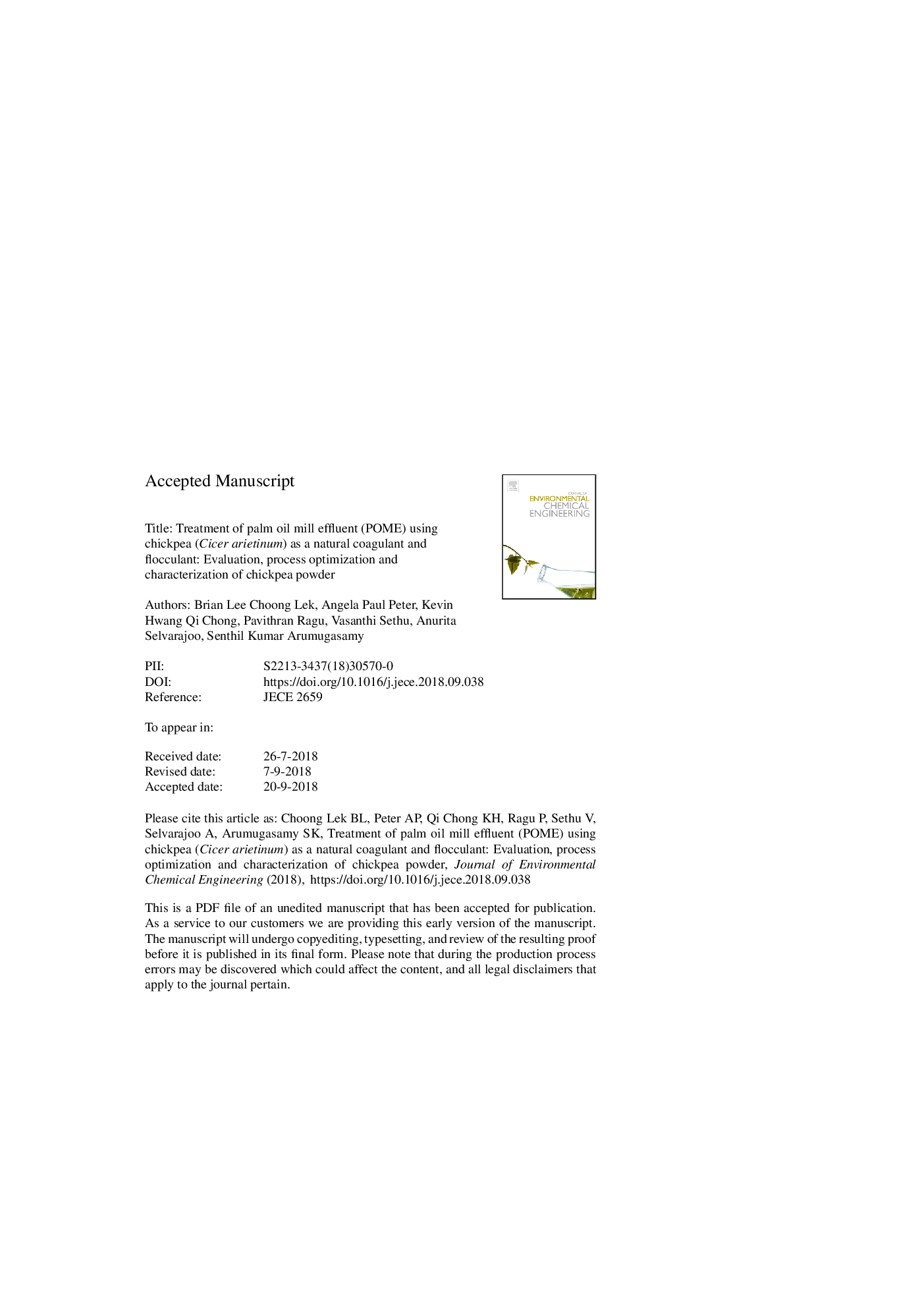| Article ID | Journal | Published Year | Pages | File Type |
|---|---|---|---|---|
| 11028982 | Journal of Environmental Chemical Engineering | 2018 | 41 Pages |
Abstract
There has been increasing interest on the use of natural organic coagulants to replace synthetic inorganic coagulants due to environment and health concerns and its failure to comply with discharge regulations. In this study, chickpea (Cicer arietinum) was utilized as a natural and novel coagulant and flocculant in the treatment of palm oil mill effluent (POME) produced from crude palm oil extraction. The standard jar test method was utilized to investigate the effects of pH, dosage and rapid mixing speed on the removal of total suspended solids (TSS), turbidity and chemical oxygen demand (COD). By applying response surface methodology with a central composite design, the optimum condition was established at pH of 6.69, chickpea dosage of 2.6âg/L, and rapid mixing speed of 140ârpm. At the optimum condition, the removal percentages of turbidity, COD and TSS were determined to be 86%, 56% and 87% respectively. Characterization of chickpea with Fourier transform infrared spectroscopy revealed the presence of OH, CH, NH, CC, CO, CN bonds which is most likely to be found in proteins and polysaccharides; while results from scanning electron microscopy showed the rough and porous structure of chickpea and confirms the interaction between the suspended solid pollutants of POME and chickpea. On top of that, analytical results from energy dispersive x-ray spectroscopy and bomb calorimeter discovered that the dewatered sludge recovered post-treatment at optimum condition have a high potential to be used as a clean solid biomass fuel.
Keywords
Related Topics
Physical Sciences and Engineering
Chemical Engineering
Chemical Engineering (General)
Authors
Brian Lee Choong Lek, Angela Paul Peter, Kevin Hwang Qi Chong, Pavithran Ragu, Vasanthi Sethu, Anurita Selvarajoo, Senthil Kumar Arumugasamy,
